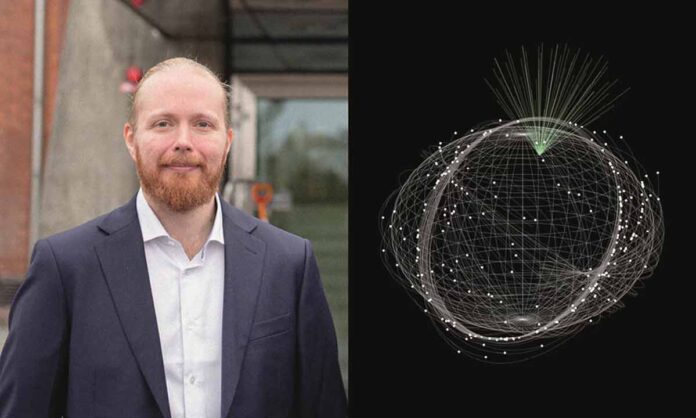Every day, 10-200 tonnes of space debris enter the Earth’s atmosphere. It is made up of dust and small and larger gravel particles known as meteoroids. These particles come from comets and asteroids and date back to the formation of the solar system.
When a meteoroid enters the Earth’s atmosphere and burns up, the material is dispersed in the atmosphere. Most meteors are invisible to the naked eye, but radar can detect them.
Until now, the height of the meteors could not be confirmed with certainty, but a thesis at Ume University has shown that rare meteors are found at unusually high altitudes. This was accomplished through data analysis from a radar system in Japan.
Improved knowledge of space debris
In his thesis, PhD student Daniel Kastinen also used the radar system of the scientific organisation EISCAT to measure space debris created in November 2021. Then the decommissioned satellite Kosmos-1408 was destroyed by a Russian missile during an anti-satellite test.
He was able to estimate the size of the fragments using new analytical methods. A novel method can also be used to calculate the orbits of spacecraft. The research helps to improve our understanding of our near-Earth space environment and the mapping of the growing amount of space debris.
Near-Earth asteroids can be tracked using radar systems
The thesis also contributes to a better understanding of how asteroids can be studied. Daniel Kastinen demonstrated that the EISCAT 3D radar system is currently being built in northern Scandinavia. It will be able to track and study asteroids that could collide and damage the Earth by simulating their movements and how they reflect radio waves.
Small minimoons are seen in simulations
There is also the possibility of discovering asteroids, known as mini-moons, that are temporarily captured by the Earth’s gravity. Minimoons up to a thousand metres in size are predicted to orbit the Earth each year. But only a few have been discovered so far.
– My primary goal has been to carefully analyse radar measurements of meteors and space debris and assess their precision. This is done to improve future analysis and to use the results in conjunction with the new computer simulations. In a comment on the thesis, doctoral student Daniel Kastinen says, “The work paves the way for future research and allows cross-disciplinary studies on meteors. It is colloquially known as shooting stars, as well as space debris and near-Earth asteroids.”

